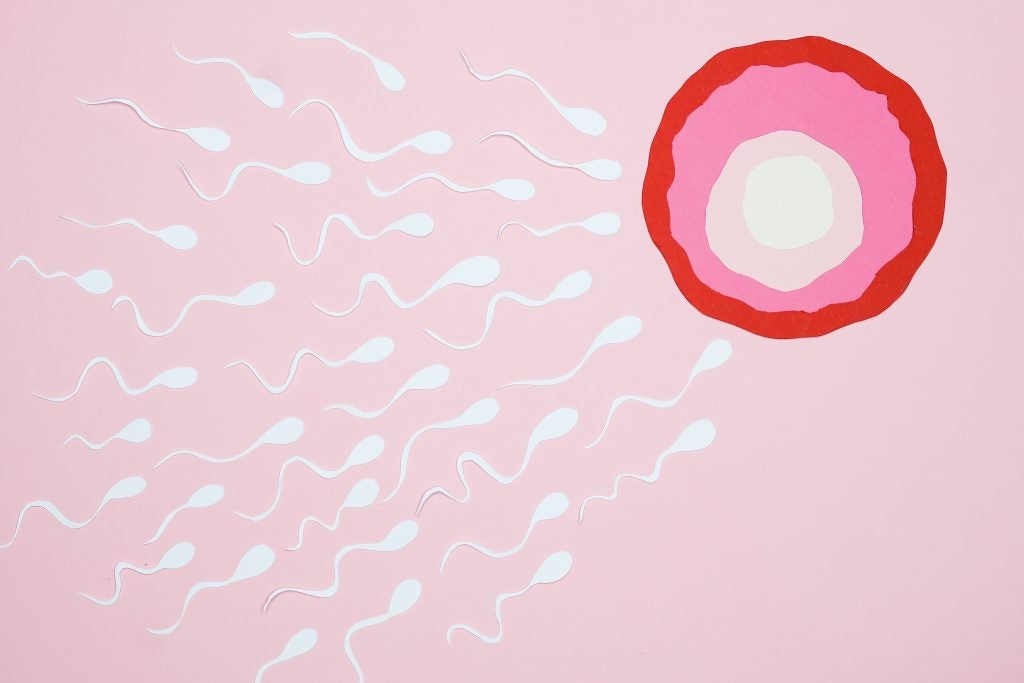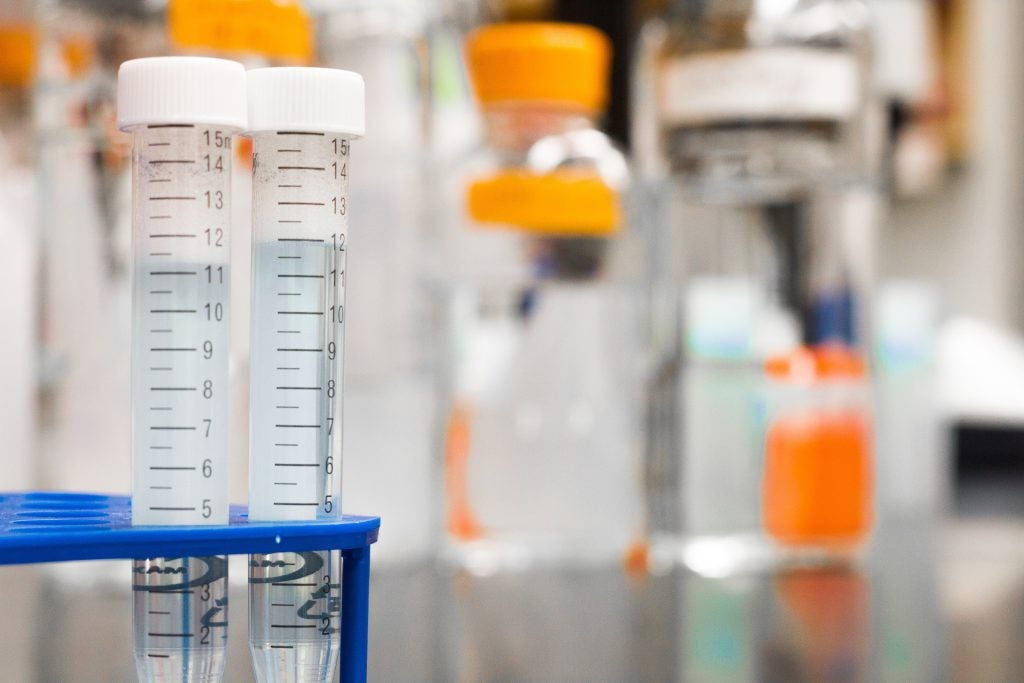Disclaimer Note: While both males and females can be infertile, this article focuses on male infertility, it’s most common causes and treatments. For information on female infertility click here.

Infertility is when a male and female partner cannot successfully conceive a child after a year of frequent, unprotected intercourse. Male and female infertility are each responsible for 33% of failed conceptions and the rest of the time it is usually due to complications with both partners.1 Typically, male infertility is due to complications that hinder the production of healthy sperm. These complications are usually anatomical, hormonal, or lifestyle and can affect the male’s overall health. Infertility can be frustrating for a couple trying to conceive, fortunately there are methods to both diagnose and possibly treat male infertility.2
Table of Contents
What Normally Happens

Every day, a male’s body will produce millions of sperm (the male gamete). Sperm is produced in the seminiferous tubules of the testicles contained in the scrotum (the sac of skin below the penis). This process is controlled by the male sex hormone testosterone. Once produced, sperm will mature in the epididymis, and then travel through a set of tubes called the vas deferens. These tubes will pass by the seminal vesicles and prostate which add their own secretions to the sperm to make it semen. When a male ejaculates, the semen will exit out of his body through the urethra. If the semen is ejaculated into a female’s vagina, it has the chance to meet an egg.2 Sperm contains half the man’s DNA, and upon fusing with a female’s egg (the female gamete) can produce a fetus, which develops into a fetus. The process of an egg fusing with sperm is called fertilization which leads to the conception of a fetus. If there is a problem with the production or delivery of sperm, fertilization and conception cannot occur.2 To get a female pregnant, a male’s sperm must be healthy, carried into the semen in high enough volumes to increase chances of fertilization, and functional and mobile. If there are any issues with any parts of this process, the sperm won’t be able to reach the egg to fertilize it, making a male infertile.3
Causes of Sperm Disorders and Their Appropriate Treatments
Most often, male infertility is due to issues with the development or production of sperm. This can be due to a variety of factors: genes, lifestyle, long-term problems, chromosomal, or hormonal problems. A Stanford University study found that fertility reflects a man’s overall health, and that men who live a healthy lifestyle will more likely produce healthy sperm.4 Furthermore, it is this sperm production process that is most important when examining what causes male infertility. If the sperm production process is disrupted, then the risk of becoming infertile increases. Making mature, healthy sperm that can travel depends on many factors. Complications in the production process can stop cells from growing into sperm, keep the sperm from reaching the egg, and even fluctuate the temperature of the scrotum, which also affects fertility. The three most common causes of male infertility include sperm abnormalities, low sperm count, and ejaculatory issues.5
Sperm Abnormalities
Sperm abnormalities can result in deformed size or shape of sperm which affect its ability to reach an egg.4
Abnormalities are typically due to problems of the testicles:
- Inflammation of the testes
- Varicoceles
- Abnormally shaped testes
Deformations of a male’s sperm are due to problems with the testicles. This can result in incorrect shape or size of sperm which would inhibit its ability to reach an egg.5 Varicoceles is swelling of the veins that drain the testicle, which correlate to abnormal scrotal temperature. Fortunately, this is an issue that can be reversed.3 Varicoceles can be diagnosed by a physical examination of the scrotum and are most successfully treated by corrective surgery.2
Low Sperm Count
Low sperm count is defined as less than 10 million sperm per mL of semen.5 Males with low sperm count are able to produce healthy sperm, but those sperm are so few in number that the chances of one of them reaching and fertilizing an egg is low. Oligospermia is a condition where a male has less than the average amount of sperm and azoospermia is when a male cannot produce any sperm. When he cannot produce any sperm, he has azoospermia.2 Azoospermia can be treated by surgical choices. Overall, there are many reasons that can result in low sperm count that are outlined below.
Lifestyle Choices
Lifestyle choices include smoking, chronic alcohol abuse, anabolic steroid use, overly intense exercise, malnourishment, exposure to environmental toxins, anemia, and even stress. While all these may not cause infertility, they will increase the chances of becoming infertile and therefore are important in analyzing what causes infertility. Additionally, wearing tight fitting clothing can raise the temperature of the scrotal sac, producing sperm of lower quality.5
Testicular Trauma

Trauma to the scrotum can cause damages to the vital internal organs (testes, epididymis, vas deferens etc.) that are essential for sperm production. Damages to the scrotum and testicles can also disrupt the pathway that sperm needs to travel from the testes to the tip of the penis. Testicular torsion is caused by a supportive tissue abnormality that allows the testes to twist inside the scrotum, which is characterized by extreme swelling. This is dangerous because this torsion shuts the blood vessels that feed the testes, which can lead to the complete loss of function if not attended to as soon as possible. However, if tended to early enough, testicular torsion can be corrected by surgery.
Prior Surgeries
Previous surgeries can also causes blockages in the male reproductive system, not allowing sperm to reach an egg. These surgeries include a vasectomy, scrotal or testicular surgeries, prostate surgeries, or any abdominal surgeries, including those for treating cancer.3
Chromosomal Causes
Since sperm are the male gamete, issues with chromosome numbers can affect sperm functionality and cause abnormal development of male reproductive organs. These conditions can include cystic fibrosis, Kallmann’s syndrome, and Kartagener’s syndrome.3 Klinefelter’s syndrome is another genetic condition, in which each cell in the human body has an additional X chromosome. This syndrome has been correlated to both oligospermia and azoospermia.6
Infections
Furthermore, scarring from infections or diseases can block the epididymis, which stores sperm before it travels through the vas deferens on to the seminal vesicles. Some of these infections and diseases include mumps, tuberculosis, gonorrhea, influenza, smallpox, and syphilis.2
Hormonal Causes
Hormones are what signal the testicle to make sperm, so insufficient hormone levels lead to poor sperm growth. Hypothyroidism or low thyroid hormone levels can cause poor semen quality, poor testicular function, and may disturb one’s libido.2 Congenital Adrenal Hyperplasia occurs when increased levels of adrenal androgens, (which may cause low sperm count) an increased number of immature sperm cells, and low sperm motility suppress the pituitary gland.2 This can be treated with hormone replacements.2 These are only a couple of hormonal disorders that influence a male’s ability to produce quality sperm, yet many exist, all with varying degrees of severity.
Ejaculatory Problems
A male can produce healthy, functional, mobile sperm, but if those sperm cannot reach an egg, a male will still be considered infertile. Anatomical and post-surgical issues with ejaculation can result in the sperm’s inability to reach an egg.
Retrograde ejaculation can contribute to male infertility through a malfunction of the bladder sphincter, which allows all or some of the ejaculate to enter into the bladder during climax rather than out of the body through the urethra. This results in what is called a “dry orgasm,” – when a male reaches sexual climax but may ejaculate very little to no semen depending on the severity of the torsion. Retrograde ejaculation is often corrected by medications such as decongestants that contract the bladder sphincter, or by surgery that reconstructs the bladder neck.2 Erectile dysfunction (ED) occurs when a male cannot produce a desired erection. For more information on the different types of ED click here. Without an erection a male cannot ejaculate into his partner and the sperm have no way of reaching an egg.5
What a Doctor’s Visit Entails
Male infertility is often only diagnosed by tests performed in a doctor’s office because the most obvious sign of male infertility is the inability, or difficult to conceive. Most of these tests are painless. A diagnosis is typically done with a full history followed by a physical exam and semen tests, with potential blood work. Some questions may include those about your surgical history, childhood illnesses, any current health complications, or lifestyle choices which could affect your sperm production and delivery.2
Semen Analysis
The most common and routine procedure to do is a semen analysis. Semen is often collected twice and studied for volume, count, motility, and structure. Any volume of semen less than 2mL can indicate blockages in the seminal vesicles, prostate gland, or ejaculatory duct. Sperm count of less than 10 million per mL is considered “poor” and is diagnosed as oligospermia. Motility of less than 50% is rated as below the minimum which can result in sperm never reaching an egg.5
Other Tests

Other male infertility tests which can be performed include a transrectal ultrasound to observe the structures of the ejaculatory duct or seminal vesicles. Blockage to these areas would inhibit sperm delivery. If a patient has low sperm count, a testicular biopsy is done to further assess the sperm. This surgery only includes a small incision to the scrotum. This test can examine the testicular tissue and find the cause of infertility as well as collect sperm for potential assisted reproduction. Finally, a hormone profile done through bloodwork can determine which hormones are insufficient.2
Typical Treatments
Not all cases of male infertility are possible to reverse or treat, but for those that are there are usually a variety of treatments to use. There are a few common ways to treat male infertility:
- Medications to increase sperm production
- Antibiotics to treat an infection
- Hormones to reverse any imbalances
- Wearing loose fitting clothing
For those who wish to conceive, but for which male infertility is impossible to treat, there are several options for conception. One option is artificial insemination, commonly used for those with low sperm count. Sperm is often collected several times to get a large enough volume and then placed in the female’s uterus for fertilization. Another option is in vitro fertilization which mixes the sperm and eggs in a laboratory and then places those fertilized eggs in the female’s uterus. 5
Concluding Remarks
In many cases couples with problems conceiving believe it is due to infertility of the female. In reality, the man is the cause of the infertility just as often as the female partner. Culturally it is assumed to be the female, due to the fact that men often do not seek out medical assistance in regards to infertility complications.2 Semen analysis is a simple and harmless way to test for male infertility that aids in diagnosing the complications and selecting the best available treatment. In America, Planned Parenthood provides semen analysis services that may be partially covered under state funding.
References
- “Male Infertility | Infertility.” MedlinePlus, U.S. National Library of Medicine, 7 Feb. 2019.
- “What Is Male Infertility?” Urology Care Foundation – What Is Benign Prostatic Hyperplasia (BPH)? Web. Feb 2019.
- “Male Infertility.” Mayo Clinic, Mayo Foundation for Medical Education and Research, 20 Sept. 2018.
- “What Causes Male Infertility?” Stanford Edu. Stanford University, n.d. Web. 24 Nov. 2015.
- “Male Infertility: Causes, Treatment and Prevention.” American Pregnancy Association, 8 Oct. 2018. Web. Feb 2019.
- “Klinefelter Syndrome Treatment & Management.” Klinefelter Syndrome Treatment & Management: Medical Care, Surgical Care, Consultations. N.p., n.d. Web. 24 Nov. 2015.
Last Updated: 27 February 2019.
